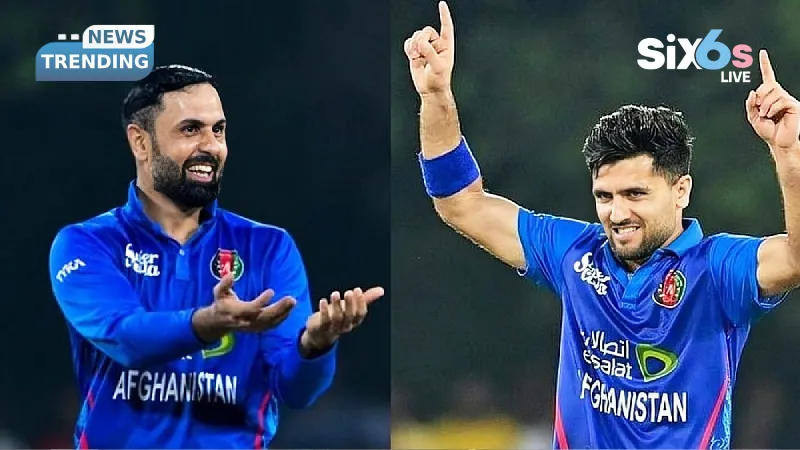Afghanistan’s selectors have dished out a fiery selection before the UAE white-ball series against Bangladesh, with Fazalhaq Farooqi, Gulbadin Naib, and Karim Janat left out. It feels like a clear signal of a fresh squad, and has already provoked energetic discussions from fans, experts, and social media.
Youth over experience: a calculated gamble
It is always weird to say goodbye to names you are familiar with, but it is also a testament to the need for more substance and new concepts. Bashir Ahmad, a 20-year-old left-arm seamer, will fill that position, and 18-year-old Wafiullah Tarakhil, who was in great form during Shpageeza, has been given a T20 allocation. Bashir has taken 12 wickets and played 14 domestic T20 matches, and has enough raw pace and length variations to get the selectors excited. And Tarakhil scored 298 runs in 9 Shpageeza innings.
In domestic T20 Bashir’s economy sits around 9.06 suggests, which would indicate pace and the ability to take wickets, and also has a journey of learning ahead of him, while Tarakhil’s strike rate suggests he can provide Afghanistan with late-overs power hitting and could potentially turn matches. ACB doesn’t expect much from the Asia Cup tournament. A fair assumption is that they are trying to source bench strength; therefore, they can be one step ahead of the T20 World Cup next year.
Where does that leave the all-rounders?
The exclusion of Gulbadin and Janat dilutes multi-dimensional depth and tips the team towards a more specialized balance. Afghanistan will still rely on experienced spin and match-winners, but seam-bowling variety and later-order batting experience are slighted. It will lead to captains needing creative field placements and flexible bowling changes, while also putting youngsters into responsibility early.
This selection will become an experiment in real-time: the bench players will need to either emerge quickly in utility roles or highlight gaps that selectors will need to solve. Gulbadin’s seam and late-order hitting and Janat’s all-round portents will definitely be missed in high-pressure situations. Captaincy and leadership will face their own challenge: Hashmatullah Shahidi will be the captain of the ODI side, while Rashid Khan will be leading the shorter format, which will create dual responsibilities for their coaching staff.
Ghazanfar shuffle and spin strength
Curiously, AM Ghazanfar has been brought into the ODI squad while being selected as a T20 reserve, but it makes sense in the context of Afghanistan’s spin depth. With Rashid Khan, Mujeeb Ur Rahman, Noor Ahmad, and Mohammad Nabi all there as spinners, Ghazanfar could be a specific cover for formats or into the system and to blood him in ODIs. With a T20 series in Sharjah before the 50-over stage of the tour in Abu Dhabi, the selectors have a compact and broad laboratory to rotate players and test combinations in various conditions. Including reserves where the likes of Bilal Sami and Faridoon Dawoodzai show, selectors are still expanding the talent pool across formats. This scalability may provide clear positional depth before the T20 World Cup next year.
The selectors’ selections balance short-term trials with long-term strategy: senior players are at risk of immediate loss of selection, while exciting junior players will receive uncertain opportunities. If Bashir, Tarakhil, etc., excel in Sharjah and Abu Dhabi, it’ll be hailed as a brave decision; if not, the voices for experience will be deafening in a short amount of time.
Stay updated on the latest cricket news and exciting updates at Six6slive. Dive into our in-depth articles and analyses to connect with the action today!
